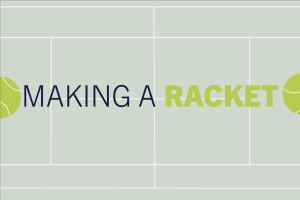Staff Editorial: Our dependence on technology is dangerous
Our obsession with our phones threatens to hinder our basic cognitive and social development
March 8, 2022
“Get out your laptops and go to Canvas.” This phrase is so commonly heard by students that they often forget how much of their school day is spent looking at a screen. “Go like and comment on my recent post.” These words cause our free time to be filled with such meaningless activity that we end up assessing our self-worth from the little number that appears over the word “followers” on our Instagram profile. We scratch our heads and ask ourselves “Why do our students think they are not good enough,” yet we, too, participate in being a slave to the menace that has kids’ self esteem: our screens.
From the rise of Gates to the works of Zuckerberg, removing technology from our daily lives altogether would be near impossible. However, with 39% of our young adults reporting an addiction to their phones and a study from the University of Missouri linking anxiety and depression to excess phone use, our devices are taking over our lives. Who knows, you may have already checked your phone before getting to the second paragraph of this editorial.
We turn to our devices for everything. According to the American Marketing Association, your brain on the “smartphone” drug is the same as your brain on cocaine: we get an instant high, or release the pleasure chemical “dopamine” every time our screen lights up with a notification. Dopamine reinforces and motivates the behavior that makes us feel good and, in turn, can create addiction. Our attention spans are diminished at the mercy of our screens; a 2017 study from Microsoft shows that goldfish can focus longer than we can. Our addiction even goes as far as to hurt our natural desire to experience real face time and, instead, makes us prefer talking to a face on a screen or hidden behind a screen.
In a 2017 study, looking at the rise of depression and suicide among teenagers, the CDC noted a rise in rates of both over the years 2010 to 2015, and found that suicides among teens rose by 65%. The number of girls with severe depression rose by 58%. Though it’s only a correlation, the team found a tight relationship between mental health issues and a rise in “new media screen activities.” About 48% of those who spent five or more hours a day on their phones had thought about suicide or made plans for it, versus the 28% of those who spent only one hour per day on their phones.
Apple demonstrated awareness by introducing the Screen Time feature in the 2018 iOS 12 update, a settings feature that allows the iPhone user to monitor how much time they spend on their phones. However, this surface-level solution is the equivalent of telling an alcoholic to lock up their liquor but letting them keep the key.
In order for change to come from in a world characterized by its rapid technological advancements, we must acknowledge that there is a time and place to use our devices and, more importantly, times to put them away. Schools and businesses should encourage their students and employees to “go dark” from personal devices during free periods to improve mental health and productivity. Ask a trusted friend to change your social media password during the school day to increase your productivity. Setting time limits on apps is a step in the right direction however, the method is purely a band-aid solution. Furthermore, smartphone companies should take bigger strides by using cognitive-based methods to limit our screen time. Today’s technology has the power to do outstanding things. It’s up to us over whether we can use that technology to our detriment or our advantage.









